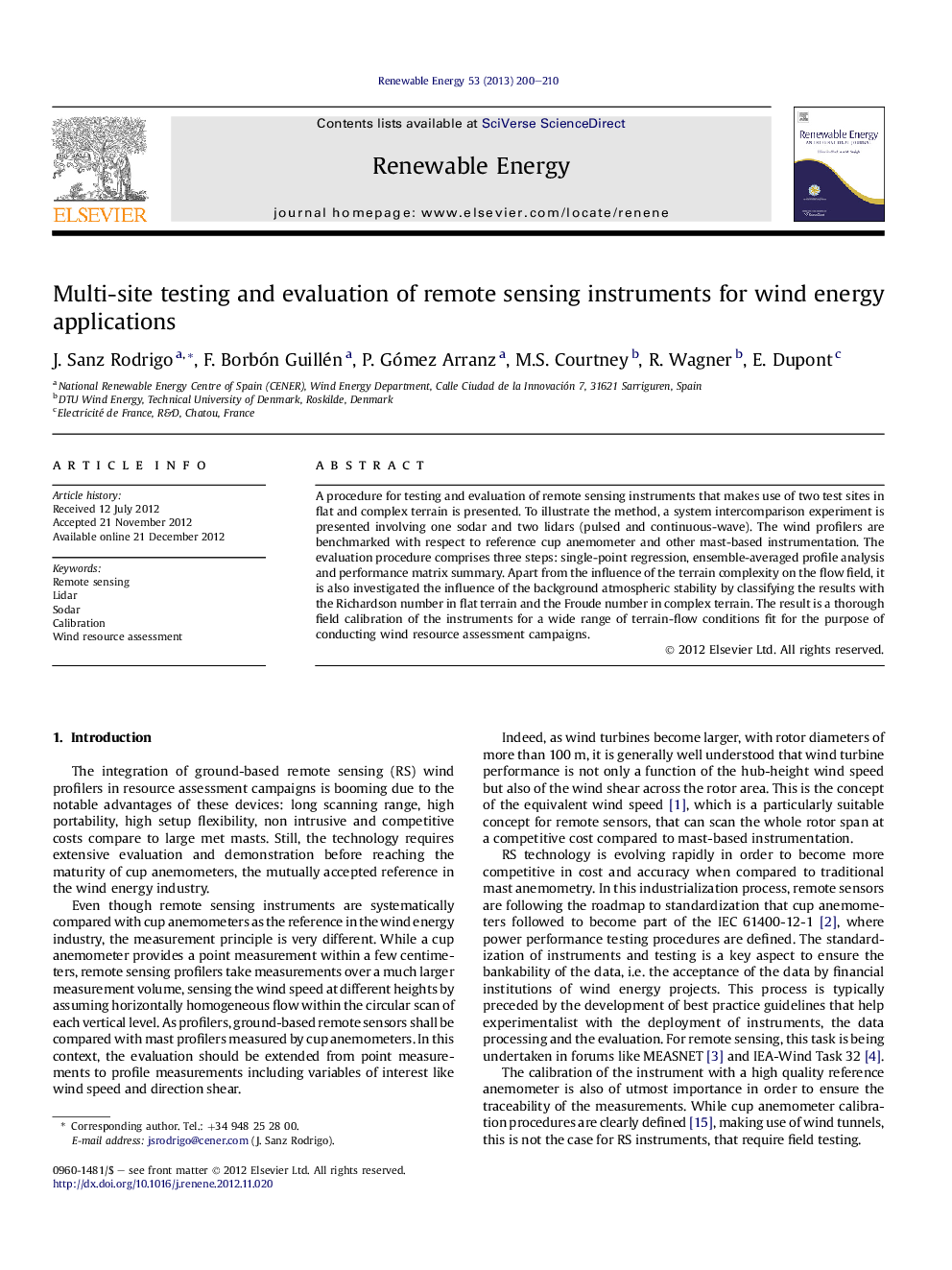| Article ID | Journal | Published Year | Pages | File Type |
|---|---|---|---|---|
| 300506 | Renewable Energy | 2013 | 11 Pages |
A procedure for testing and evaluation of remote sensing instruments that makes use of two test sites in flat and complex terrain is presented. To illustrate the method, a system intercomparison experiment is presented involving one sodar and two lidars (pulsed and continuous-wave). The wind profilers are benchmarked with respect to reference cup anemometer and other mast-based instrumentation. The evaluation procedure comprises three steps: single-point regression, ensemble-averaged profile analysis and performance matrix summary. Apart from the influence of the terrain complexity on the flow field, it is also investigated the influence of the background atmospheric stability by classifying the results with the Richardson number in flat terrain and the Froude number in complex terrain. The result is a thorough field calibration of the instruments for a wide range of terrain-flow conditions fit for the purpose of conducting wind resource assessment campaigns.
► New evaluation procedure for remote sensing instruments based on multi-site testing. ► Instrument performance classified with stability conditions. ► Case study of a two-stage measurement campaign in flat and complex terrain.
